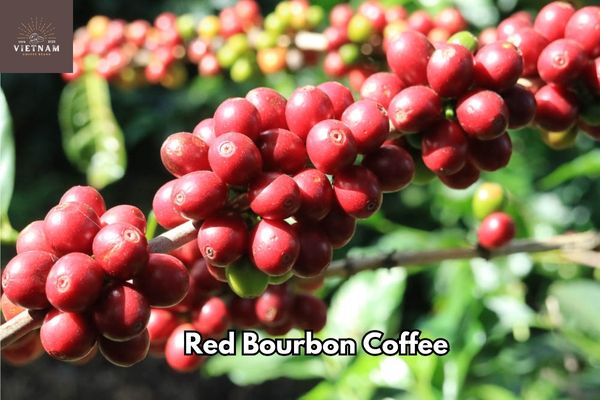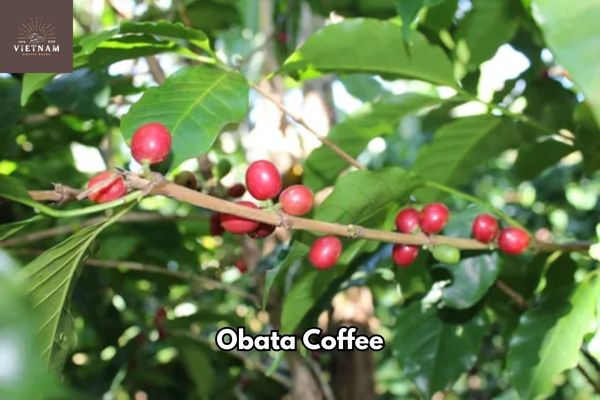Liberica is a rare and unique coffee species that originated in West Africa. The liberica coffee beans have a distinctive asymmetric shape and jagged furrow.
Despite being first cultivated in the Philippines, liberica accounts for less than 1.5% of worldwide coffee production. It is still grown and prized locally as kapeng barako. Liberica is also cultivated on a small scale in Indonesia, Malaysia, and the Amazon Rainforest of Guyana.
This exceptionally rare coffee offers a special taste experience for adventurous coffee lovers. The liberica beans can be used to brew a bold, aromatic cup with a complex flavor profile.
Key Takeaways
- Coffea liberica, also known as Liberian coffee, is a species of flowering plant used for producing coffee.
- It is native to western and central Africa but has become naturalized in other regions such as Colombia, Venezuela, Borneo, and Java.
- Coffea liberica trees are tall, reaching up to 20 meters in height, and have large cherries, beans, and leaves.
- Coffea liberica accounts for less than 1.5% of commercial coffee grown and is mainly cultivated in the Philippines, Indonesia, and Malaysia.
What Are Liberica Coffee Beans?

Liberica is a coffee species like Arabica and Robusta. However, it accounts for just 1.5% of global production, coming almost exclusively from Southeast Asia.
Liberica coffee beans are easily identifiable by their exceptionally large, irregular teardrop shape. The beans are nearly twice the size of Arabica and Robusta varieties. The plants also stand out, frequently growing over 20 feet tall, compared to the 10-15 foot average height of other coffee species. The beans’ mammoth size and the plants’ impressive stature make Liberica coffee immediately distinguishable from its relatives.
Liberica originated in Liberia then spread to the Philippines, Malaysia, and Indonesia in the late 1800s. It was resistant to the devastating coffee leaf rust pandemic, so regional farmers quickly switched to growing Liberica.
Today, Liberica is the predominant coffee in the Philippines and Malaysia, comprising over 70% and 90% of production respectively. Though rare worldwide, Liberica found a niche in Southeast Asia due to its rust resistance.
Liberica Coffee Origin and Cultivation
Liberica coffee, known locally as kapeng barako, has an intriguing origin story. It was first commercially grown in the Philippines in the 1740s by Spanish friars. Today, the Philippines’ main Liberica producers are the provinces of Batangas and Cavite.
In Malaysia, Liberica is cultivated in the Coffee Belt of Johor, thanks to 19th century Javanese immigrants. The Malaysian Liberica variety is a hybrid of West African and local lowland strains.
Due to limited supply, these rare Liberica beans tend to be more expensive than other coffee types. But their uniqueness and bold flavor make them worth seeking out.
Unique Characteristics Of Liberica Coffee
The unique Liberian coffee bean stands out among other commercial coffee varieties with its asymmetric shape and jagged central furrow. This distinct characteristic gives the beans a recognizable ‘hook’ at the tip.
The size of the liberica beans is also notable, as they are among the largest of all coffee varieties.
When it comes to flavor, it have a distinct taste that sets them apart. They have a flavor profile that is comparable to the robusta species, with a bold and full-bodied taste.
Additionally, liberica beans have a lower caffeine concentration compared to arabica and robusta.
In terms of cultivation, they are primarily grown in the Philippines, Indonesia, and Malaysia. However, there are also wild variants of liberica that can be found in the Amazon Rainforest of Guyana.
Liberica coffee boasts a truly distinctive flavor profile. It delivers a rich, bold taste with hints of dark chocolate and earthy undertones. The full-bodied nature provides a robust, indulgent sipping experience.
This unique coffee can be brewed through various methods like pour over, French press, and espresso. Each technique allows the complex flavors to unfold differently. Regardless of brewing style, Liberica’s inherent qualities shine through for an exceptional cup.
Experimenting with different preparations is an exciting way to fully appreciate and unlock the one-of-a-kind taste that sets Liberica coffee apart.
Liberica Coffee Taste

When you take a sip of this bold and robust brew, your taste buds are transported to a world of rich flavors and a full-bodied experience.
It known for their unique characteristics, offer a taste that sets them apart from other coffee varieties. These beans, grown on the coffee plant, have a strong flavor that is distinct and memorable.
The flavor profile of liberica coffee is often described as having hints of dark chocolate, earthiness, and a unique smoky aroma. It is known for its low acidity and smoothness, making it a favorite among coffee enthusiasts who prefer a more intense and flavorful cup of coffee.
With its larger size and special shape, it truly deliver a one-of-a-kind taste experience that is both bold and satisfying.
Understanding Excelsa coffee can deepen one’s appreciation for the distinctive flavors and characteristics it offers, as well as broaden the taste palate when exploring the captivating world of Liberica coffee and its unique taste profile.
Why is Liberica Coffee rare
Rare and highly sought after, Liberica coffee is a hidden gem in the world of specialty beverages. The scarcity of this can be attributed to several factors:
- Limited cultivation: Liberica coffee accounts for less than 1.5% of commercial coffee grown worldwide. Its cultivation is primarily concentrated in the Philippines, the Malaysian state, and parts of Indonesia. The low production volume contributes to its rarity.
- Coffee rust disease: The worldwide pandemic of coffee rust in the late 19th century devastated coffee plantations, including Liberica. While Liberica trees were more resistant compared to other species, they eventually succumbed to the disease. This led to a decline in production and availability.
- Lack of promotion: Unlike Arabica and Robusta, Liberica coffee has not received as much promotion and marketing on the global scale. Consequently, it remains relatively unknown to many coffee enthusiasts.
- Focus on other varieties: The Philippine government, for instance, shifted its focus to promoting Arabica and Robusta varieties, leaving Liberica coffee with limited support and resources.
Despite its rarity, Liberica coffee continues to captivate those who have had the opportunity to experience its unique flavors. Preserving and promoting this variety for future generations is crucial to ensure its survival in the ever-evolving coffee industry.
The rarity of Liberica Coffee stems from its limited cultivation, often overshadowed by the understanding Arabica beans have gained in the mainstream market.
Types of Coffea Liberica

One fascinating aspect of Coffea Liberica is the variety of flavors it offers to coffee enthusiasts.
There are two main types of Coffea Liberica:
- Kape Barako, also known as Baraco or Barako coffee, is a cultivar grown in the Philippines and is not very common on the global market. It has the largest leaves and beans among all coffee varieties.
- Excelsa, on the other hand, grows mainly in Southeast Asia and is used primarily as a blending coffee. It adds complexity and depth to the brew, with a tart, fruity, and dark flavor.
Both types of Coffea Liberica offer unique taste profiles that coffee lovers can explore.
The cultivation of these beans is not as widespread as arabica coffee and robusta coffee, making them a rare find in the coffee world.
Benefits and Health Effects
Indulging in a cup of Coffea Liberica can contribute to overall well-being and have positive effects on health. Here are four reasons why incorporating it into your daily routine can be beneficial:
- Rich in Antioxidants: It contain high levels of antioxidants, which can help reduce inflammation and protect against cell damage.
- Boosts Cognitive Function: The moderate caffeine content in liberica coffee can enhance mental alertness, focus, and improve cognitive performance.
- Supports Digestive Health: Drinking liberica coffee can stimulate the production of stomach acid, aiding digestion and preventing gastrointestinal issues.
- Sustainable Cultivation: By choosing to consume liberica coffee, you’re supporting sustainable cultivation practices and the preservation of this unique coffee species, which has played a significant role in the coffee industry.
Incorporating it into your daily routine can not only satisfy your taste buds but also contribute to your overall well-being.
Cultivation and Harvesting Techniques
Liberica coffee trees tower up to 20 meters tall. Skilled farmers use ladders to carefully harvest the ripe cherries high up in the branches.
Cultivating quality Liberica coffee requires specific techniques. Liberica thrives in tropical, low-altitude regions. The trees need adequate sunlight, water and nutrient-rich soil. Farmers must protect the plants from pests and diseases too.
Harvesting involves manually picking only the ripest red cherries. With meticulous cultivation and harvesting, farmers can produce Liberica coffee cherished for its distinct flavor and high quality.
Processing and Roasting Methods
After coffee cherries are harvested, the outer pulp needs to be removed to reveal the inner coffee beans. This can be done using dry or wet processing methods. In dry processing, the cherries are dried in the sun before the pulp is mechanically removed. In wet processing, the cherries are fermented to loosen the pulp before washing.
Once the coffee beans are separated from the pulp, they are ready for the roasting process. Roasting plays a vital role in developing the unique flavors and aromas of the coffee. The roasting process can be adjusted to achieve different roast levels, from light to dark, each resulting in distinct flavor profiles. Achieving the right balance of time and temperature during roasting is crucial to unlock the full flavor potential of the rare beans.
Frequently Asked Questions
Conclusion
In conclusion, liberica coffee beans are a fascinating and rare species of coffee that offer a unique taste and experience. They have a distinctive asymmetric shape and jagged furrow, making them stand out among other varieties. Despite their low commercial production, they are highly regarded in the Philippines, where they are grown for the local market.
Liberica beans have a larger size and lower caffeine concentration, providing a different coffee experience for those looking for something special. They can be enjoyed in a traditional cup of kapeng barako or used in creative recipes. Overall, they are a true gem in the world of coffee.






